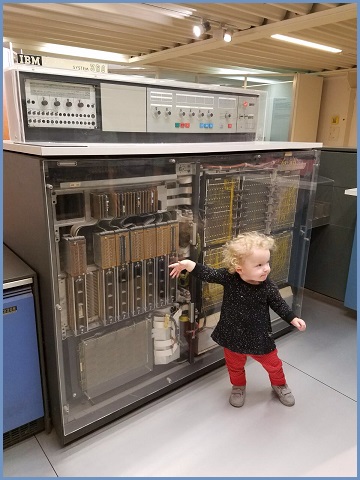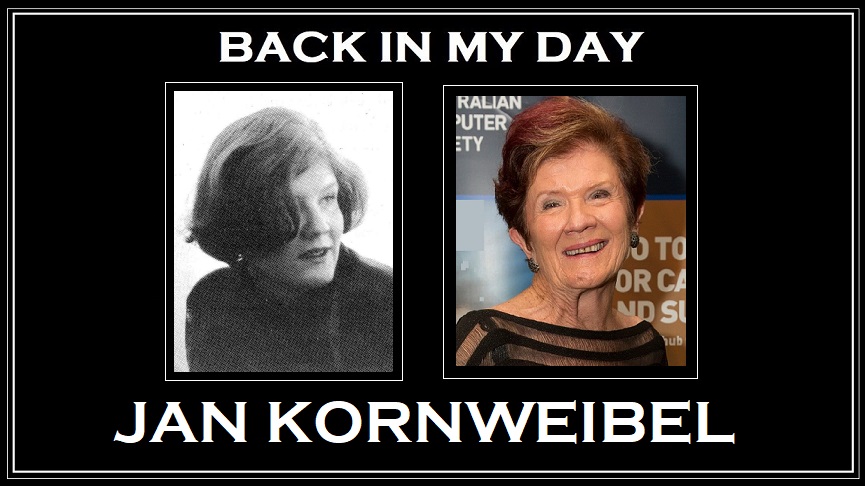‘Back in My Day’ is an Information Age series profiling some of our older ACS members and Information Age readers speaking about their early days in IT.
This week we speak with Jan Kornweibel, aged 81, from Perth, Western Australia.
How did you get started in IT?
It began in 1965 when I was in London doing the Australian travelling bit. Of course, London in the 1960s was absolutely swinging. We had a dinner party and I was saying to a friend that I wasn’t enjoying the work I was doing and one of them piped up and said, “why don’t you do computer programming?”
Computers were just something in cartoons to me in those days. But I said to those friends, "Well, you know in the Underground there’s an advertisement that says, ‘if you can complete this puzzle you can be a computer programmer’.”
I could always do them – I assumed it was easy – but none of the others could. They were all university graduates, smart people, so I thought I’d better check this out.
So I went and did an aptitude test. You had to get 85 per cent to get into this course and I got 99.
We decided to put our next summer’s money – we went away with two summers of money – into me doing the course.
Out of 20, only two of us passed.
For a Western Australian with a fairly conservative upbringing, it was a real eye-opener to me because there must have been 10 different nationalities on this course.
How did you go finding IT work in the 60s?
The institute that ran the course had a list of companies that, if you passed, you could approach.
These companies were interested in taking graduates from this program because there were no university courses in computer programming back then.
A couple of the international companies I approached, which I won’t name, said they would only take males, not females – it was like I was back in Australia!
But in the end I got a job with Colgate Palmolive.
The team at Colgate Palmolive would have been about eight people, three of us were females. One other girl and myself had done the course but the others had university degrees in other fields.
Back then, companies needed software developers but it was the hardware that cost money. So they took people on who had at least studied something and could be trusted with the hardware.
After working with Colgate, I went travelling for nine months and then wrote to the IBM manager back in Western Australia to say I was working in computing and he said to contact them when I came back.
So I did, but the IBM centre manager wanted a man and said I was too young.
Anyway, my father happened to know one of the managers of [betting company] TAB and helped get me a job there.
In 1967 I was working at the TAB with another female, but the industry was still very much dominated by males.
At the first Western Australia Computer Society dinner I went to, they didn’t even bother to turn the light on at the hotel’s female toilets.

"This photo is taken in a museum in Munich, in 2018," says Jan. "The child is my grand-daughter and she was caught ‘acting’ for the photo labelled ‘My Nana Jan was an early pioneer in computing’. I worked on IBM 360’s for some years, from about 1968, in Perth, mainly in COBOL, but also Fortran. Before then, it was assembly languages, and RPG. Seeing it in a museum now really does show how far my days go back!’"
What kind of technology did you work with?
In the early days they were all card systems.
With Colgate Palmolive I worked on an IBM 1401 but halfway through that year they got a General Electric mainframe, one of their third-generation mainframes.
At TAB we developed their first online system, that was back to using the 1401, but we didn't have any proper terminals. We ran a pilot of what we developed for one of the Melbourne Cups. There were about five or six developers and we all went to different TAB branches and we were using telex machines as terminals.
It worked well, so the manager the next year went off to Sweden and got dumb terminals.
When developing that online system, it was mostly done during the late afternoon and into the early hours of the morning because the TAB needed the 1401 themselves.
They also had a contract with WA Police who would come in and run programs on that computer.
Those were fun times. We all worked hard but we enjoyed what we were doing.
I worked at the TAB until 1969 when I had my first child. Being the TAB, they used to bet every day on whether I would turn up.
After having my child, I mostly did contract work. Perth being a big village, it was easy to get known and be reliable.
I also enjoyed learned new programming languages, especially when mini-computers came in.
I had people coming and picking up my coding sheets because I mostly worked from home. As the kids got older, I ran play groups with like-minded women and got more involved with ACS where I introduced special interest groups.
What were some of your career highlights?
I enjoyed my early programming contract work and the variety of work. It was really easy to get contract work in Perth.
Through ACS, I was running a special interest group on computers helping with disability. And that’s what led to me being awarded a Winston Churchill Fellowship.
Churchill died when we were in London and I was among the thousands of people who went past where his body was lying in state. Straight away, people were going around collecting donations for the fellowship. I would never have dreamed back then, that in 1981 I would be awarded a Churchill Fellowship.
The fellowship let me expand on the special interest groups I was working on with ACS which was about how to embed technology directly into people’s lives. I travelled, studying the practical implementation of technology for people with disability.
I helped bring four of the main scientists I’d worked with back to Australia to give papers at conferences.
We wanted to show people with disabilities, the people who worked with them, and their families, what would happen in the future with the computing.
One speaker from the UK had been adapting Apple Computer’s word processing package to help people communicate using a switch with their foot.
An important idea we tried to get across was that accessibility was more of a design problem than a technological one.
Q: How would you encourage other people to get the same satisfaction and find the same passion for technology as you have?
For someone starting in IT as a career, I say they should enter it as soon as they get an opportunity.
I think with things like cyber security there’s a lot more areas now – it doesn’t have to be coding or nothing. Technology is wider, it’s a much bigger field than it once was.
As soon as you get an opportunity, you need to keep your eyes open, because it’s wider than in my days being a programmer and a system analyst and that’s about it.
I do think you have to study and learn continually but also be prepared for changes in direction – you've got to think outside the box for yourself personally as well as for the work you’re doing.
I also think once people are further in their careers or have retired, they should think about what they can offer to the community.
There’s so much you can offer once you have that kind of experience.
Since retiring, I have been working in conjunction with Curtin University helping people with autism complete international software testing certification.










